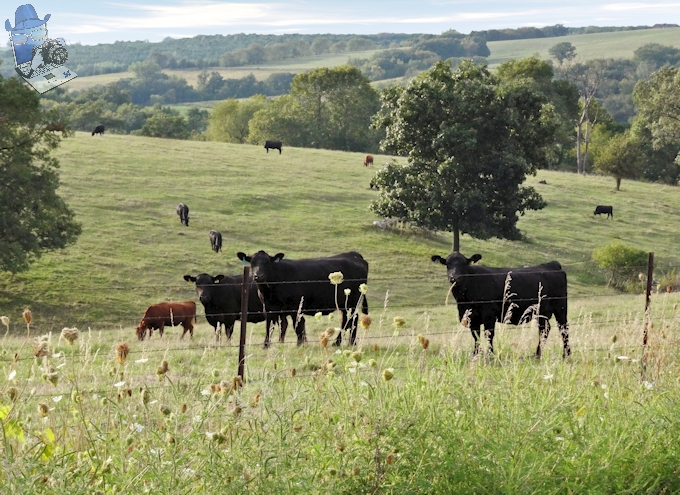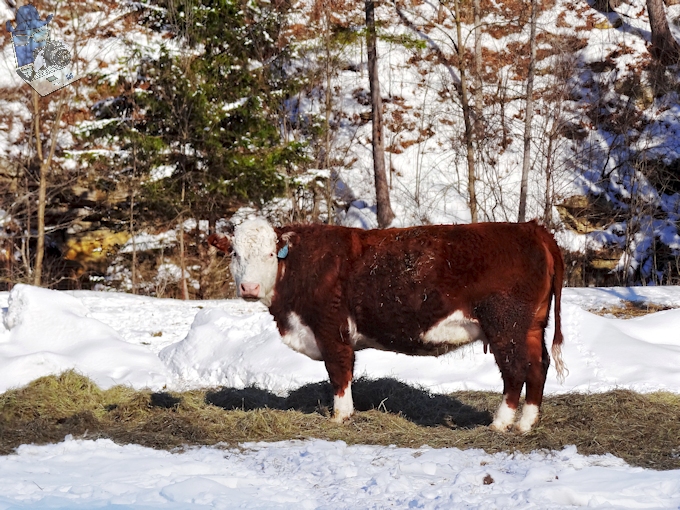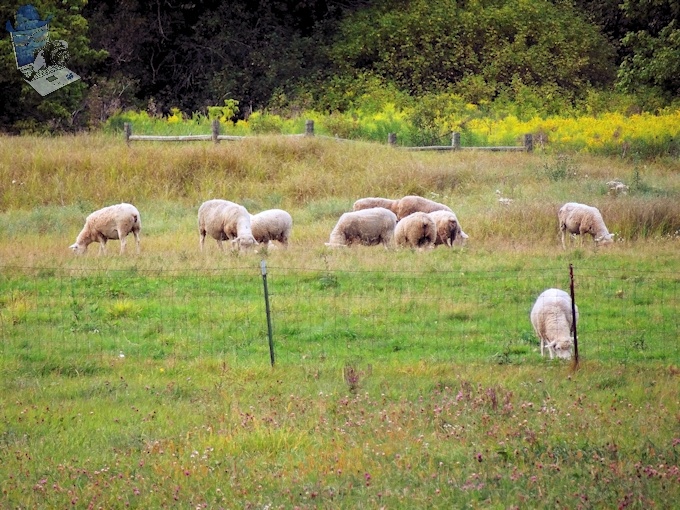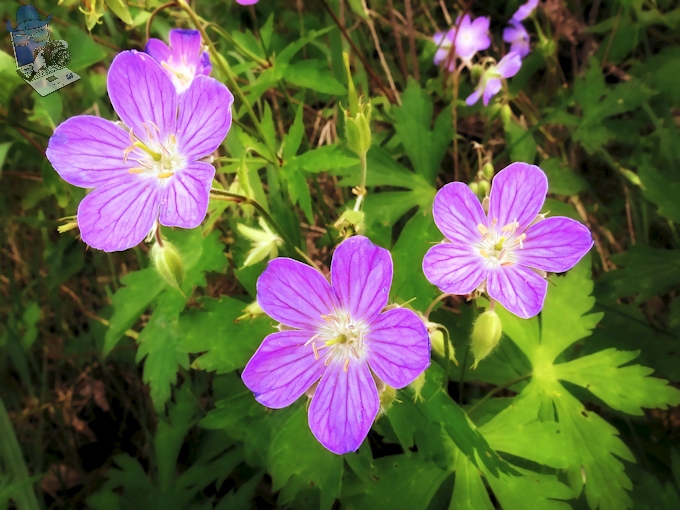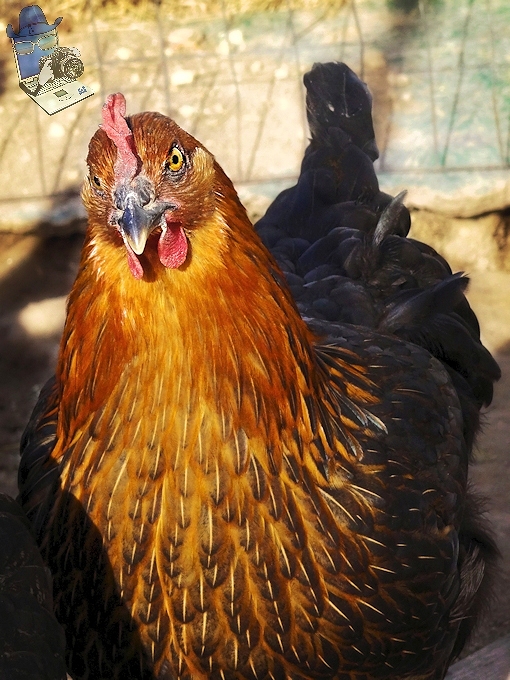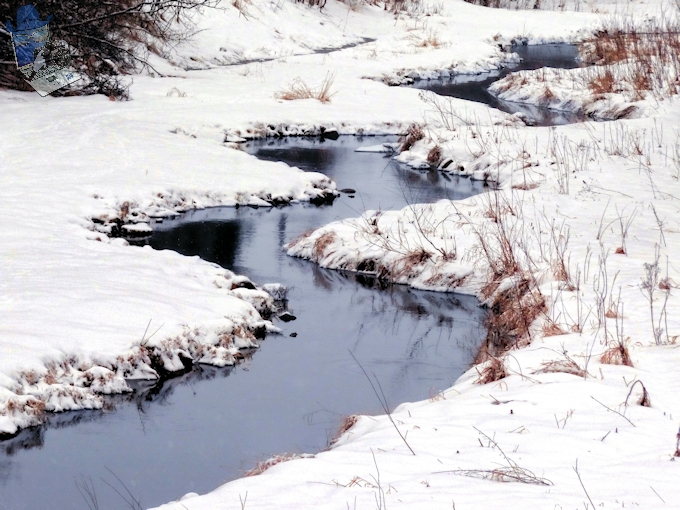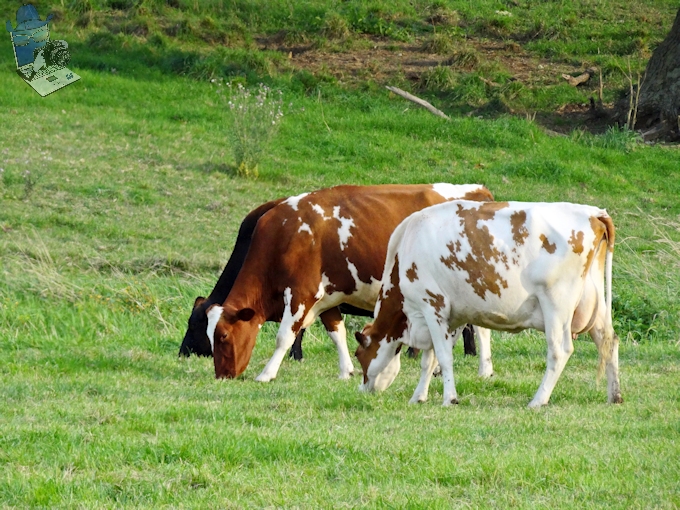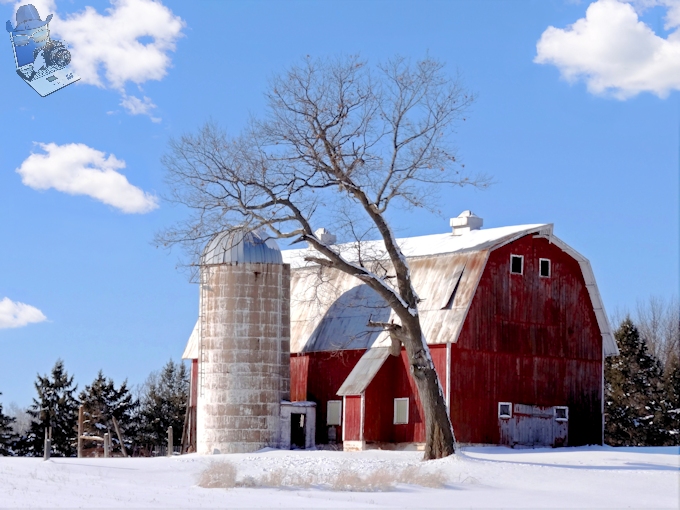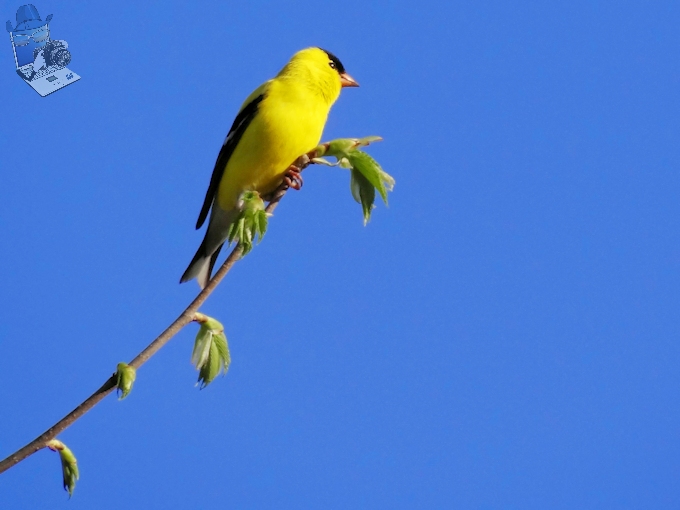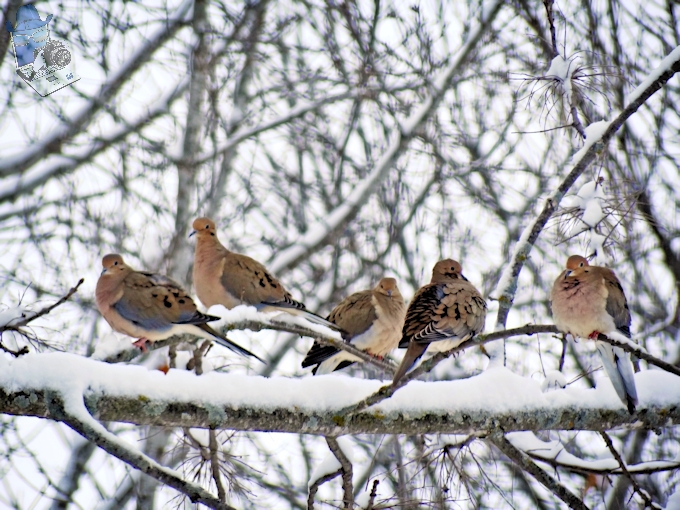I bet these Red and Black Angus cattle are happier in the summer than winter, at least I would prefer looking at green grass again.
The naturally polled Angus were developed from cattle native to the counties of Aberdeenshire and Angus in Scotland. Hugh Watson can be considered the founder of the breed as he was instrumental in selecting the best black, polled animals for his herd. His favorite bull was Old Jock, who was born in 1842. Another of Watson’s notable animals was a cow, Old Granny, which was born in 1824 and said to have lived to 35 years of age and to have produced 29 calves.
The pedigrees of the vast majority of Angus cattle alive today can be traced back to these two animals so I wonder how many of these Angus are from Old Jock and Old Granny. I can’t say that having Old Granny on a pedigree makes an exceptional sounding pedigree!
Old Granny’s Kids?


